#1882 Ltd
Text


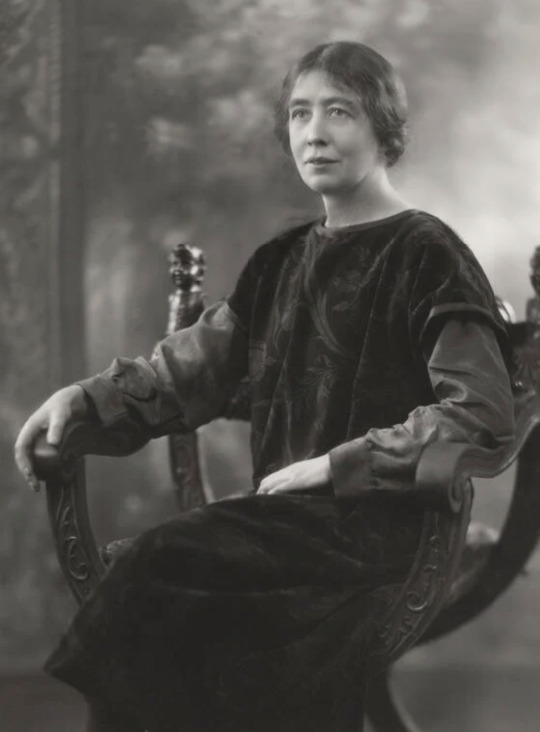
Sylvia Pankhurst, by Sylvia Pankhurst, chalk, circa 1907-1910
Sylvia Pankhurst, by Herbert Cole, chalk. circa 1925
Sylvia Pankhurst, by Bassano Ltd, bromide print, 25 February 1927
Estelle Sylvia Pankhurst (5 May 1882 – 27 September 1960) English feminist and socialist activist and writer. With her mother and sister, she was a leader in the suffrage movement, helping women in the UK claim their right to the vote.
#sylvia pankhurst#feminist action#feminist activism#feminist#feminism#suffrage#women's suffrage#the vote#womens activism#activism#activists#badass#art history#aesthetictumblr#tumblraesthetic#tumblrpic#tumblrpictures#tumblr art#tumblrstyle#artists on tumblr#aesthetic
9 notes
·
View notes
Text

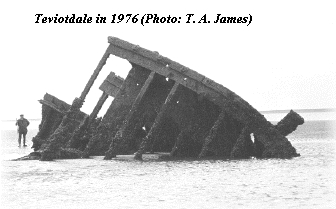
On October 13th, 1886, the Govan built Steamship Teviotdale was wrecked off the Welsh coast with the loss of 18 lives.
Built in 1882 by Stephen & Sons Ltd., Alexander Stephen and owned at the time of her loss by Helmsdale S. S. Co., on voyage from Cardiff to Bombay with a cargo of coal, stranded and was wrecked on Cefn Sidan Sands in Carmarthen Bay with the loss of her master, Captain J. Smith, and sixteen crew.
Iinitially being towed by two tugs. The winds freshened by 10 p.m. and ‘blew so fiercely’ that the vessel lost most of her rigging. At 6.30 next morning she took a heavy roll, shipped a quantity of water and her cargo shifted. As the Carmarthen Journal reported ‘The sea was running a height seldom seen on the Welsh coast’ and with the ship taking on more water, and with the loss of her sails, she was almost helpless. She failed in an attempt to run for Penarth Roads and the crew found themselves in Carmarthen Bay. Aground and being mercilessly pounded by the ferocious shallow seas the crew attempted to abandon ship: this failed as three lifeboats were stove in. Eventually a boat was successfully launched with the captain, two officers, 13 men and 3 boys, pushing off leaving 10 men on board. Those that remained tried to dissuade the others from leaving. The lifeboat soon got broadside to the surf, and she was never seen again by those on board. Only two of its occupants survived (one died subsequently) – 17 others drowned.
initially being towed by two tugs. The winds freshened by 10 p.m. and ‘blew so fiercely’ that the vessel lost most of her rigging. At 6.30 next morning she took a heavy roll, shipped a quantity of water and her cargo shifted. As the Carmarthen Journal reported ‘The sea was running a height seldom seen on the Welsh coast’ and with the ship taking on more water, and with the loss of her sails, she was almost helpless. She failed in an attempt to run for Penarth Roads and the crew found themselves in Carmarthen Bay. Aground and being mercilessly pounded by the ferocious shallow seas the crew attempted to abandon ship: this failed as three lifeboats were stove in. Eventually a boat was successfully launched with the captain, two officers, 13 men and 3 boys, pushing off leaving 10 men on board. Those that remained tried to dissuade the others from leaving. The lifeboat soon got broadside to the surf, and she was never seen again by those on board. Only two of its occupants survived (one died subsequently) – 17 others drowned.
The wreck of the ship is still visible, you can see photos of it on the link below
8 notes
·
View notes
Text

De Olhos Bem Fechados: Todo o simbolismo ocultista do último filme de Kubrick que expôs o submundo dos cultos satânicos da Elite Illuminati - parte 1
Por Cláudio Tsuyoshi Suenaga
Nunca houve um diretor de cinema mais à frente de seu tempo do que Stanley Kubrick, tampouco um tão anti-establishment e que tenha procurado revelar tantos segredos ocultos da Elite Illuminati devidamente disfarçados e codificados em camadas e mais camadas de profundidades, pistas visuais subliminares e insinuações astutas.
Kubrick não denunciou conspirações e perfídias cometidas por governos, sociedades secretas, entidades controladoras ou grupos elitistas ocultistas apenas no seu último filme. Esse princípio de servir à narrativa superficial e a indústria enquanto codifica um subtexto oculto é algo que Kubrick realizou ao longo de toda a sua incomparável carreira de 50 anos. Talvez por isso mesmo e por sua meticulosa atenção aos detalhes e inabdicável perfeccionismo, que o mestre artesão fez apenas 13 filmes.
Kubrick morreu de um ataque cardíaco enquanto dormia, aos 70 anos, em 7 de março de 1999, exatamente 666 dias antes de 1º de janeiro de 2001 (em um aceno horrível para seu filme mais famoso) e apenas cinco dias depois de entregar aos engravatados da Warner Bros. o corte final de Eyes Wide Shut, adaptado do romance Traumnovelle (Dream Story), escrito pelo médico austríaco Arthur Schnitzler (1862-1931) em 1926 e recomendado em 1968 pelo produtor executivo germano-americano, antigo assistente e cunhado de Kubrick, Jan Harlan (1937-). Kubrick passou três décadas desenvolvendo o roteiro, mas seu perfeccionismo fez com que as páginas do roteiro fossem reescritas no set. O filme levou aproximadamente cinco anos na pré e pós-produção e detém o Recorde Mundial do Guinness para a filmagem contínua mais longa, com 400 dias.
Kubrick teria sido assassinado por ter ido longe demais ao revelar o submundo da alta elite e seus rituais e sacrifícios satânicos?
O compositor austríaco Wolfgang Amadeus Mozart (1756-1791) morreu logo após revelar os mistérios maçônicos em sua ópera A Flauta Mágica (1791), com libreto do alemão Emanuel Schikaneder (1751-1812), seu companheiro de loja maçônica. O jornalista e escritor inglês Stephen Knight (1951-1985) desvendou a conspiração maçônica por trás dos assassinatos de Whitechapel da Londres vitoriana em seu livro Jack the Ripper: The Final Solution (London, George G. Harrap & Co. Ltd.), lançado em 1976. A partir do ano seguinte, Knight começou a sofrer ataques epilépticos, e em 1980 foi constatado um tumor em seu cérebro. O tumor foi removido, mas retornou em 1984. Knight faleceu aos 33 anos (ironicamente o mesmo número de graus da Maçonaria e a idade de Cristo quando foi crucificado) em 1985, menos de um ano depois de ter lançado The Brotherhood: Secret World of Freemason (New York, Acacia Press), no qual desnudava vários segredos da Maçonaria. E William Morgan (1774-1826), autor de Freemasonry Exposed and Explained (New York, Fitzgerald Publishing Corportation, 1882), publicado pela primeira vez em 1836, foi sequestrado e assassinado por maçons do oeste de Nova York, o que deu início a um forte movimento antimaçônico.
Se a morte súbita de Kubrick decorreu de um assassinato, este pode ter sido encomendado por magnatas da alta elite de Hollywood que, ao verem a prévia ou exibição teste do filme pela primeira vez, decidiram pelo corte de grande parte do conteúdo. Antevendo que Kubrick não concordaria, cioso que era pela inviolabilidade de sua obra, resolveram removê-lo definitivamente, numa política conhecida como “controle” ou “redução de danos”.
Com Kubrick fora do caminho, o filme poderia ser reeditado, com a garantia de que nada significativo seria cortado, e embora a intenção fosse suprimir as cenas mais comprometedoras, isso é exatamente o que diriam. De fato, De Olhos Bem Fechados é tido como o filme inacabado de Kubrick, que teve apenas tempo para supervisionar o corte final, pré-exibido em 2 de março, cinco dias antes de sua morte.
Citando obrigações contratuais para fornecer uma classificação R (Restrito, menores de 17 anos requerem um acompanhamento dos pais ou responsáveis), a Warner Bros. alterou digitalmente a orgia na mansão, adicionando figuras sombrias digitalmente para bloquear alguns dos atos sexuais mais obscenos na sequência da orgia, evitando assim uma classificação NC-17 (fortes cenas de sexo, apenas para adultos) que limitaria a distribuição. Ora, se Kubrick teve de contornar as restrições verbais e visuais do Hayes Production Code, que proibia o uso aberto de linguagem chula, nudez, conteúdo sexual, etc. em Lolita, nunca se importou com tais restrições, vide que Laranja Mecânica recebeu uma classificação X (conteúdo adequado apenas para adultos).
O que haveria, afinal, de tão controverso e explosivo no conteúdo do filme a ponto de instar o seu assassinato? Em cenas que a Warner Bros. retém e agora se recusa a lançar, e que seriam cruciais para entender a mensagem subliminar escondida no filme, Kubrick expôs o mundo subterrâneo e clandestino dos rituais ocultistas/satânicos da alta elite (empresários, banqueiros, magnatas da mídia e linhagens nobres) que explora e mantém uma vasta rede de tráfico sexual e pedofilia (no que a de Jeffrey Epstein, o bilionário que se suicidou na prisão em 10 de agosto de 2019, seria apenas a ponta do iceberg), e sugere que essas sociedades secretas controlam tudo, desde a polícia até a mídia. Destarte, qualquer um que lhes traga problemas ou se lhes torne um empecilho, está sujeito a desaparecer. Quase todas as conspirações no que diz respeito aos Illuminati e às sociedades secretas como a Maçonaria e a Skull and Bones estão contidas em De Olhos Bem Fechados.
Kubrick filmou o ritual na luxuosa mansão Mentmore Towers, em Buckinghamshire, condado ao sul do Reino Unido, construído entre 1852 e 1854 pelo barão Mayer Amschel de Rothschild (1818-1874) para servir de casa de campo para membros da família de banqueiros mais rica de todos os tempos.
É sabido que os Rothschilds tomavam parte de eventos mascarados muito semelhantes ao mostrado em De Olhos Bem Fechados – veja as fotos de uma festa de 12 de dezembro de 1972 dada pela socialite francesa Marie-Hélène Naila Stephanie Josina de Rothschild (1927-1996), esposa de Guy Édouard Alphonse Paul de Rothschild (1909-2007), no Château de Ferrières, um dos castelos da família localizado a cerca de 24 quilômetros de Paris, construído para o barão James Mayer de Rothschild (1792-1868) na década de 1850. O barão orientou o arquiteto Joseph Paxton (1803-1865) a projetar Château de Ferrières no mesmo estilo mas com o dobro do tamanho de Mentmore Towers, que mais tarde acabou sendo usado para a estranha cena do "baile de máscaras" em De Olhos Bem Fechados.

Os anfitriões Guy e Marie-Hélène de Rothschild. Embora a roupa da primeira seja quase aceitável para coquetéis comuns, a baronesa realmente abraçou o tema da noite. Coberta por uma cabeça de veado realista cravejada com lágrimas de diamantes reais, seu rosto se manteve coberto durante grande parte da festa. Foto: Vendome Press.

O barão Alexis de Rede (à esquerda) veio vestido como um homem com muitos rostos – e por sua vez, talvez intenções multifacetadas. Ele foi fotografado sentado à sua mesa com um membro da família de banqueiros do Espírito Santo, que curiosamente circulou um de seus olhos. Foto: Vendome Press.

Ao que parece, a baronesa conseguiu conversar admiravelmente com o barão Alexis de Rede apesar das restrições de sua máscara de cabeça de veado. Foto: Vendome Press.
Além das máscaras típicas de rituais pagãos, que variam de cabeças de animais a gaiolas de mentira, há bonecas desmembradas e outros brinquedos de crianças quebrados propositalmente espalhados pelas mesas. Algumas mesas até apresentam manequins nus como se estivessem em um caixão com comida servida em cima dele, talvez inspirado nas mesas de manequins nus de Laranja Mecânica, lançado um ano antes.

Parte da comida daquela noite foi servida em cima de um cadáver de manequim deitado em uma cama de rosas. Foto: Vendome Press.
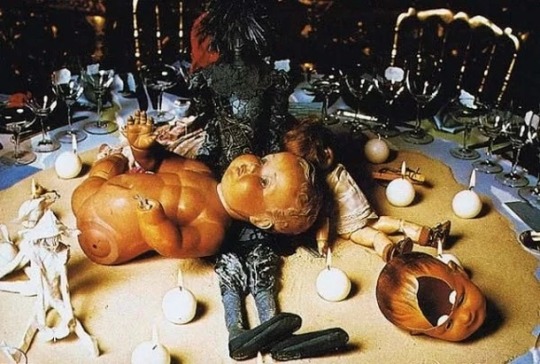
Algumas das leituras mais nefastas do Baile Surrealista de 1972 dizem respeito à adoração satânica e ao sacrifício humano. Embora haja uma inegável falta de evidências reais, as teorias não são fabricadas do nada. Ter bonecas desmembradas e suas cabeças espancadas e decapitadas decorando mesas de jantar é uma escolha pouco convencional, afinal. O álbum Yesterday and Today dos Beatles, lançado seis anos antes, traz os membros do quarteto de Liverpool cobertos de partes de corpos de bebês mortos, em uma doentia zombaria com o aborto, o inevitável resultado da agenda de amor livre que os Beatles estavam promovendo. Foto: Vendome Press.

Não fossem a idolatria e a alienação das massas, não seria necessário explicar imagens tão claras.
Encharcados em tons misteriosos de laranja e vermelho, Guy e Marie-Hélène de Rothschild fizeram sua mansão Château de Ferrières parecer em chamas. O efeito foi obtido com uma série de holofotes cuidadosamente posicionados voltados para a estrutura colossal.
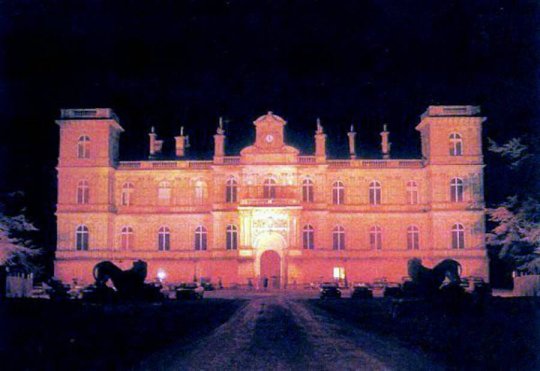
O Château de Ferrières foi banhado por um brilho vermelho profundo para dar a aparência de estar pegando fogo.
Entre as notáveis celebridades presentes estavam o pintor espanhol Salvador Dalí (1904-1989) – o inspirador da temática da festa e por isso o único autorizado a prescindir de fantasia –, a estrela de cinema Audrey Hepburn (1929-1993) e a modelo que virou atriz Marisa Berenson (1947-), que alguns anos depois estrelaria Barry Lyndon, outro filme sobre a realeza e as elites ricas.

Naturalmente, os Rothschilds chamaram o pintor surrealista mais famoso do mundo para desenhar alguns dos figurinos para o baile de 1972. Sempre o artista contrário com um temperamento que ia contra o esperado, ele optou por não usar fantasia naquela noite. Ele é visto aqui descansando no Mae West Lips Sofa que ele projetou naquele mesmo ano e que foi inspirado em sua própria pintura de meados da década de 1930.

Audrey Hepburn chegou inocentemente usando uma simples gaiola em volta da cabeça.

A modelo e atriz norte-americana Marisa Berenson (ao centro) estrelaria Barry Lyndon poucos anos depois de participar da festa secreta dos Rothschild. O filme tratava da ascensão de um humilde irlandês enquanto ele tentava incansavelmente entrar nas linhagens de sangue azul da nobreza europeia.
Os convites para este “Baile Surrealista”, como foi chamado, foram impressos ao contrário, legíveis apenas se colocados contra um espelho; texto invertido e inversão de símbolos tradicionais são práticas ocultistas comuns.

Inspirado na pintura de René Magritte de 1929, The False Mirror, o fundo das nuvens talvez seja menos interessante do que a escrita invertida do convite. Essa inversão é típica da prática ocultista de subverter as normas cristãs em favor de crenças mais blasfemas.
Em De Olhos Bem Fechados, o pianista Nick Nightingale (Todd Field) escreve a senha da mansão [“Fidelio”, a única ópera de Beethoven (1770-1827), um nome masculino italiano que significa “fidelidade”, especialmente fidelidade sexual ao cônjuge] em um guardanapo de papel no Sonata Jazz Cafe no SoHo.
A música tocada na sequência da missa negra por Nick, que está de olhos vendados, é Backwards Priests, da Divina Liturgia da Igreja Ortodoxa Romena, executada no sentido inverso, algo típico do satanismo, pela compositora e violista inglesa Jocelyn Pook (1960-) em uma mistura hipnotizante de cordas, tímpanos e cantos vocais. Kubrick gostou tanto que usou mais material de Pook de seu álbum Deluge (1997), incluindo as Migrations inspiradas em tâmil (uma língua dravídica falada pelos tâmeis ou tâmis do sul da Índia), embora a faixa tenha sido alterada depois de receber protestos por seu uso de escrituras hindus em um “ambiente profano”.

Uma liturgia cristã é executada ao mesmo tempo de forma invertida antes da orgia generalizada que se seguirá, uma forma de profanação. Eis o cântico (ininteligível porque invertido do romeno):
“E Deus disse aos seus aprendizes… Eu dei a vocês uma instrução… para orar ao Senhor pela misericórdia, vida, paz, saúde, salvação, busca, libertação e perdão dos pecados dos filhos de Deus. Os que rezam, têm misericórdia e cuidam bem deste santo lugar.”
“And God told to his apprentices…I gave you a command…to pray to the Lord for the mercy, life, peace, health, salvation, the search, the leave and the forgiveness of the sins of God’s children. The ones that pray, they have mercy and they take good care of this holy place.”
Por trás das máscaras carnavalescas venezianas (reputadas como o centro da desordem civil, da devassidão moral e do erotismo), estavam altos membros da política, da corte, dos negócios e da indústria do entretenimento.

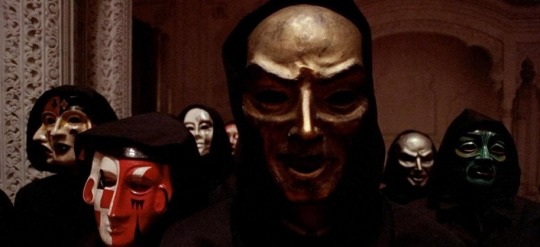
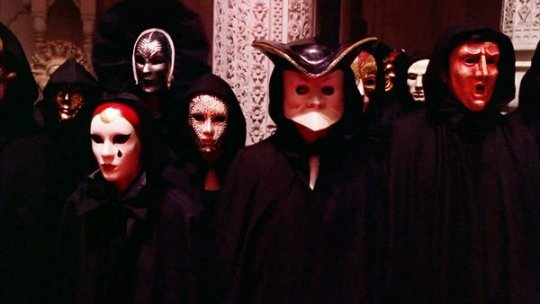
Máscaras venezianas usadas na missa negra satânica de Eyes Wide Shut.
O médico William “Bill” Harford (Tom Cruise) fica sabendo por Nick, seu antigo amigo de faculdade que se voltou para o jazz em vez de uma carreira médica de prestígio, da reunião enigmática que acontecerá durante a hora das bruxas do solstício de inverno, um baile de máscaras entre as elites da alta sociedade. Nick lhe informa a senha e que deve ir devidamente fantasiado.
Bill então pega um táxi para a loja de smokings e fantasias de aluguel, a “Rainbow”, que fica do outro lado da rua do Sonata Jazz Cafe. Os letreiros de neon do clube de jazz aparecem refletidos na vitrine da Rainbow enquanto Bill fala com seu proprietário. Por que Bill pegaria um táxi para simplesmente atravessar a rua? Porque está adormecido, mas dormindo de uma maneira diferente – ele está acordado, mas não está “desperto”, seus olhos estão fechados, ele está totalmente alheio aos caminhos que a esposa, uma mulher arrebatadora no auge de sua sensualidade, está traçando para ele.
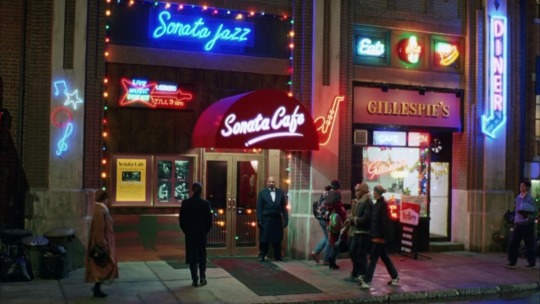

Trajado com smoking, máscara, capuz e capa alugados na “Rainbow”, Bill entra na mansão em estilo gótico com a senha fornecida por Nick.
Na sala central, ele presencia uma grande reunião, um círculo de doze figuras encapuzadas com capas pretas que, ao se despirem ao comando de um sumo sacerdote ou hierofante de capa vermelha e capuz, revelam-se mulheres nuas esculturais vestindo nada além de máscaras, salto alto e fio dental. O sacerdote bate no chão com um grande bastão, enquanto segura um incensário que espalha nuvens de incenso fumegante. Ao redor da cena estão espectadores também vestidos com mantos negros e máscaras venezianas douradas.




Cenas da missa negra de Eyes Wide Shut. O sacerdote está exatamente no centro de um "círculo mágico" formado por mulheres que muito provavelmente são ''escravas Beta''. O ''círculo mágico'' é usado em rituais de magia negra durante invocações.
Uma das mulheres se aproxima de Bill e diz: “Não tenho certeza se você sabe o que está fazendo, mas seu lugar não é aqui”. Ou seja, mesmo sob a máscara, ele é reconhecido. “Você está em grande perigo e deve fugir enquanto pode”, insiste ela.
Finalmente, o médico intruso é chamado perante o conselho inquisitorial. Ele é exposto, obrigado a remover a máscara – sendo-lhe despido o privilégio do anonimato –, revelado, julgado e depois condenado. A mulher mascarada nua que tenta avisá-lo diz ao conselho: “Leve-me. Posso resgatá-lo”. “Tem certeza de que entende o que está assumindo?”, o sacerdote de manto vermelho pergunta a ela, que acena com a cabeça.


O gesto parece conquistar a tolerância dos juízes, que permitem que o intruso saia incólume, embora não sem um forte aviso: “Se revelar alguma coisa do que aqui presenciou esta noite, ou tentar de alguma forma prosseguir com qualquer tipo de investigação, surgirão terríveis consequências para você e sua família.”
No dia seguinte, Bill descobre que Nightingale havia desaparecido misteriosamente do hotel onde estava hospedado, escoltado por dois capangas. Mandy (Julienne Davis), uma das prostitutas que estava na festa como uma escrava sexual controlada, é encontrada morta. A mídia informa que ela morreu de overdose de drogas. Em uma cena posterior, é revelado a Bill que os membros do alto escalão da sociedade secreta controlam toda a mídia e até a polícia. Fica fortemente implícito que ela foi assassinada e que sua morte foi arranjada de modo que parecesse uma overdose. E o médico percebe que ele próprio escapou por pouco de ser sacrificado no ritual satânico, e que embora se considere um membro da elite, existem forças muito superiores a ele que operam nos bastidores.
Em uma sequência de treze minutos na mesa de bilhar de sua mansão, o milionário Victor Ziegler (Sydney Pollack) revela a seu amigo Bill que era um dos mascarados no ritual e lhe adverte contra qualquer indiscrição. Bill, perturbado, o questiona veementemente sobre a morte de Amanda. Victor age com total indiferença, como se fosse algo totalmente banal uma pessoa ''comum'' ser morta pela elite. ''Ela era uma prostituta. Teve uma overdose, ela era uma drogada, era apenas uma questão de tempo pra ela morrer, e a polícia não viu qualquer crime", diz Victor.
Diante da insistência de Bill em querer tomar as investigações para si, Victor, numa clara tentativa de aterrorizá-lo psicologicamente ainda mais, diz a ele : "Eu acho que você não percebeu o tamanho do problema que você se meteu na noite passada. Quem você acha que eram aquelas pessoas? Aquelas não eram apenas pessoas comuns. Se eu lhe dissesse seus nomes, e eu não vou te dizer os nomes, mas se eu o fizesse, eu acho que você não iria dormir tão bem". Victor, nesse diálogo, admite que as pessoas que frequentam esse ritual "fora do limite do profano" eram pessoas publicamente conhecidas e poderosas em seus meios. Bill já tinha sido requisitado por Ziegler em sua festa de Natal para atender a prostituta que acabou morta, quando esta teve uma overdose enquanto transava com o milionário e necessitava de atendimento médico urgente.

Mandy, a prostituta cuja vida ele salvou, sacrifica sua vida para salvar a dele. Ela não era mais inocente, mas desejava fazer uma separação moral entre seu mundo e o dele, e estava disposta a morrer para protegê-lo de um conhecimento que o corromperia. Ela queria que ele fosse mais moral do que poderia ser, como se pudesse reconhecer a nobreza de seu sacrifício.
Prostitutas, drogas, médicos, silêncio. O dinheiro pode comprar tudo. Bill é um médico confortavelmente rico, e embora não seja um membro da alta elite tal como Ziegler, também se imagina capaz de comprar qualquer coisa. É corriqueiro que ele puxe dólares de sua carteira bem recheada para pagar pelo tempo de um taxista, pelo incômodo em fazer um homem abrir sua loja em plena madrugada, ou para pagar pela companhia fugaz da prostituta Domino (Vinessa Shaw). Uma cena significativa é aquela em que Bill rasga uma nota de US$ 100 em duas e dá a metade ao taxista que o levou até a mansão, dizendo que ele receberia a outra metade se esperasse por ele. Rasgar dinheiro é um crime a que ele se permite para comprar o favor do taxista.
Mas como descobrimos quando ele é desmascarado na mansão e ao longo do filme, ele não passa de um servo de nível médio dessa poderosa elite. O foco míope dos que se centraram nos problemas conjugais e sexuais do casal em detrimento da exposição quase precisa de técnicas de controle da mente e de toda uma realidade ocultista tenebrosa, diz mais sobre a cegueira das elites em relação ao seu próprio ambiente do que sobre as inadequações de Kubrick como pornógrafo.
O que torna os homens verdadeiramente poderosos é a invisibilidade. O título De Olhos Bem Fechados se refere à regra primordial entre os membros das sociedades secretas para encobrir a elite endinheirada da sociedade – “Meus olhos estão fechados para seus crimes, irmão”.
Arizona Wilder (pseudônimo de Jennifer Greene ou Jennifer Ann Angel, uma sensitiva treinada e condicionada desde o nascimento por técnicas extremamente invasivas e violentas de controle mental baseado em trauma para servir aos interesses da Elite Illuminati) revelou em uma longa entrevista a David Icke em 1999, que “De Olhos Bem Fechados” é um termo usado pelos programadores monarcas que significa que tudo o que você viu não deve ser revelado a ninguém, sob pena de morte. Como o super-rico Ziegler diz na mesa de bilhar a Bill: “Se eu lhe disser o nome deles (os mascarados na mansão), acho que você não dormiria muito bem”.
De Olhos Bem Fechados também é uma referência flagrante a Hollywood e aos 1% que sabem exatamente o que está acontecendo, mas por motivos compreensíveis não dizem nada a respeito. Os poucos que se arriscaram a tanto, acabaram intimidados ou mortos da mesma forma que no filme. Quantas celebridades não morreram precocemente nos últimos anos em circunstâncias mais do que estranhas e suspeitas?

Kubrick expôs os rituais da alta elite de maneira incrivelmente realista, tanto que Wilder imediatamente os identificou como sendo semelhantes aos que a forçaram a tomar parte: “Em um de meus diários de 1990, falo sobre um ritual em que todos usam máscaras douradas e mantos com capuz. Tem a ver com o deus sol. Essas máscaras são usadas em cerimônias do tipo egípcio. As máscaras significam que ‘não somos indivíduos, mas temos um propósito em mente’. Uma coisa que eles nunca fazem é tirar suas máscaras.”
Wilder também esclareceu que Nightingale, o nome do pianista, significa “Mensageiro do Escuro”, e que a loja de fantasias Rainbow Costume Rental, que por sua vez está situada sobre uma outra loja chamada Under the Rainbow, tem esse nome porque nos rituais satânicos se vai “Over the Rainbow”, música cantada por Judy Garland em seu papel de Dorothy em O Mágico de Oz (1939, dirigido por Victor Fleming e King Vidor), talvez o filme mais usado pelos programadores Monarca. O arco-íris, portanto, está associado à criação de escravas sexuais por meio de controle mental, tanto que o codinome para a base ultrassecreta de L. Ron Hubbard nos anos 70 era “Over the Rainbow”.

A loja de fantasias de aluguel “Rainbow”. Sobre o arco-íris, a palavra “Costume Rental” pode ser lida como “Controle Mental”, termo do alemão Mind Kontrolle, daí o MK da sigla MKULTRA, o que foi bem conveniente, já que havia um grande número de médicos nazistas envolvidos no projeto, entre ele o “Anjo da Morte” Josef Mengele (1911-1979).
A loja de aluguel de fantasias “Rainbow” funciona como um centro pedófilo mantido pelo seu proprietário, o Sr. Milich (Rade Šerbedžija), que explora sexualmente sua própria filha ninfeta (Liliane Rudabet Gloria Elsveta “Leelee” Sobieski).

Na luxuriante festa na mansão de seu amigo Ziegler, Bill é conduzido pelo corredor por Nuala Windsor (Stewart Thorndike) e Gayle (Louise J. Taylor), duas modelos “Presidenciais Monarcas”, ao que ele pergunta aonde elas o estão levando. Gayle, cujo nome se liga ao amigo de Bill, Nick Nightingale, e a Dorothy Gale, a protagonista de O Mágico de Oz, responde que estão indo “onde termina o arco-íris”. Antes que Bill possa dizer algo, Nuala pergunta: “Você não quer ir onde termina o arco-íris?” E ele responde: “Bem, isso depende de onde é”. No folclore, o que há no fim do arco-íris? Um pote de ouro, outro convite ao dinheiro e à riqueza. A relutância de Bill em perseguir o “pote de ouro”, neste caso, embora esteja flertando descaradamente, é paralela à sua busca hesitante em momentos posteriores por aventuras sexuais que nunca chegam ao clímax. Claro, o fim do arco-íris é um lugar impossível de alcançar, da mesma forma que a satisfação, a falsa promessa do desejo.

O prisma irradiando as cores do arco-íris é um dos símbolos mais eloquentes quanto ao poderio das elites por reunir em um só tanto a pirâmide illuminati quanto as cores maçônicas. Não é à toa que ela se destaca em fundo negro na capa de The Dark Side of the Moon, o oitavo álbum de estúdio da banda britânica de rock progressivo Pink Floyd, lançado em 24 de março de 1973, bem no início do solstício da primavera.
Estrelas de cinco pontas (pentagramas) aparecem com destaque no fundo como decorações na festa de Natal de Ziegler, na lanchonete, na loja de brinquedos e assim por diante. O pentagrama na matemática é o símbolo da “proporção áurea”, mas, invertido, é o símbolo máximo do satanismo, já que faz atrair demônios e gera um campo preciso de energia luciferiana. Aleister Crowley o interpretava como a descida do espírito à matéria.
Há também aparições discretas da Estrela de Ishtar, de oito pontas, que representa Vênus, originária das culturas assíria, babilônica e fenícia. Ishtar foi uma deusa babilônica da fertilidade, do amor, da guerra e principalmente da sexualidade. A ela eram dedicados rituais relacionados a libações e ofertas corporais. Seu culto envolvia também a prostituição sagrada. Ela foi considerada a cortesã dos deuses, e teve muitos amantes. Em muitos livros é retratada como uma excelente amante, porém muito cruel com os homens que se apegavam a ela. Esse conceito é colocado em questão por diversas vezes no filme, especialmente por Alice. O símbolo astronômico de Vênus é o mesmo usado na biologia para denotar o sexo feminino; um círculo com uma pequena cruz embaixo dele, uma representação da feminilidade, e também o símbolo do cobre na alquimia. O cobre polido era usado para fazer espelhos nos tempos antigos e, portanto, o símbolo de Vênus também foi interpretado como representando o espelho da deusa.

Na festa de Natal na mansão de Ziegler, há estrelas de Ishtar e pentagramas por todos os lados.
Continua nas partes 2 e 3.
#eyes wide shut#stanley kubrick#secret societies#illuminati#freemasons#symbolism#simbolos#ocultismo#cinema
21 notes
·
View notes
Text


















SERIALIZATION for the following firearms Part 2:
HOLLAND & HOLLAND ROYAL GUNS 1899-1993
HOLLAND & HOLLAND ROYAL OVER & UNDER GUNS 1950-1993
HOLLAND & HOLLAND SPORTING OVER & UNDER GUNS 1993
HOLLAND & HOLLAND CAVALIER GUNS 1986-1992
HOLLAND & HOLLAND ROYAL DOUBLE RIFLES - .450 & .465 1910-1941
HOLLAND & HOLLAND ROYAL DOUBLE RIFLES - .375 1911-1933
HOLLAND & HOLLAND ROYAL DOUBLE RIFLES - .240 & Small Bores Cals 1920-1955
HOLLAND & HOLLAND ROYAL DOUBLE RIFLES ALL CALS 1933-1991
ITALIAN YEAR OF MFG. DATE CODES
ITHACA GUN CO. SERIALIZATION
ITHACA GUN CO BAKER MODEL ITHACA DOUBLES 1880-1889
ITHACA GUN CO CRASS MODEL ITHACA DOUBLES 1892-1903
ITHACA GUN CO FLUES MODEL ITHACA DOUBLE & SINGLE 1908-1926
ITHACA GUN CO N.I.D. MODEL ITHACA DOUBLE 1925-1948
CHARLES LANCASTER SERIALIZATION 1826-1901
JOSEPH LANG SERIALIZATION 1858-1900
MARLIN FIREARMS COMPANY SERIALIZATION
MARLIN FIREARMS COMPANY Older Rifles 1883-1906, 1948-1968
MAUSER BROOMHANDLES SERIALIZATION 1896-late 1930
PARKER BROTHERS SHOTGUNS SERIALIZATION 1866-1942
PIOTTI SERIALIZATION 1962-1992
JAMES PURDEY & SONS, LTD. SERIALIZATION 1814-1981
REMINGTON DATE CODE DATA & SxS SHOTGUN SERIALIZATION
REMINGTON Year of Manufacture and letter code
E. REMINGTON & SONS WHITMORE MODELS 1873-1888
E. REMINGTON & SONS MODELS 1882, 1883, 1885 AND 1887
REMINGTON ARMS COMPANY MODEL 1889 TOTAL Mfg. 134200 1888-1910
REMINGTON ARMS COMPANY MODEL 1900 TOTAL Mfg. 98508 1900-1911
REMINGTON ARMS COMPANY MODEL 1894 TOTAL Mfg. 41194 1894-1910
REMINGTON ARMS COMPANY MODEL 1894 REM. SPCL 1902-1910
SAVAGE/STEVENS PRODUCTION DATA 1903-1950
L.C. SMITH SERIALIZATION
L.C. SMITH Hammer Shotguns 1884-1918
L.C. SMITH Hammerless Shotguns 1890-1918
L.C. SMITH These serial numbers include all types of L.C. Smith, Fulton and Hunter Shotguns 1918-1950
SMITH & WESSON PERFORMANCE CENTER PRODUCT CODE INFO.
SPANISH YEAR OF MFG. DATE CODES
WINCHESTER RIFLES SERIALIZATION
WINCHESTER MODEL 1866, 1866-1899
WINCHESTER MODEL 1873, 1873-1923
WINCHESTER MODEL 1876, 1876-1898
WINCHESTER MODEL 1885 SINGLE SHOT, 1885-1923
WINCHESTER MODEL 1886, 1886-1922
WINCHESTER MODEL 1890, 1890-1937 (Record is incomplete)
2 notes
·
View notes
Text
Industrial Dispensing Nozzles Market Global Analysis, Manufacturing Cost Structure, Growth Opportunities and Restraint to 2031
The global "Industrial Dispensing Nozzles Market Market" report indicates a consistent and robust growth trend in recent times, projecting a positive trajectory expected to persist until 2031. A significant trend observed in the Industrial Dispensing Nozzles Market market is the rising consumer inclination towards environmentally sustainable and eco-friendly products. Furthermore, a notable advancement in this market is the increasing incorporation of technology to elevate both product quality and efficiency. Cutting-edge technologies like artificial intelligence, machine learning, and block chain are actively employed to develop innovative products that outperform traditional options in terms of effectiveness and efficiency. The Industrial Dispensing Nozzles Market Market Research Report for 2024 highlights emerging trends, growth opportunities, and potential scenarios envisioned up to the year 2031.
By delving into the latest trends, the report keeps businesses abreast of the dynamic market environment, helping them identify emerging opportunities and navigate potential challenges. The meticulous analysis covers various aspects, offering valuable insights into the historical performance of the market and presenting the current (CAGR) status.
Get a Sample Copy of the Report at: https://www.proficientmarketinsights.com/enquiry/request-sample-pdf/1882
Who are the biggest Industrial Dispensing Nozzles Market manufacturers worldwide?
Nordson (U.S.)
Musashi Engineering (Japan)
Techcon (U.S.)
Tecdia (Japan)
Vimic (Taiwan)
Toray Precision (Japan)
Adamant Namiki (Japan)
Fisnar (U.S.)
PVA (U.S.)
VERMES Microdispensing (Germany)
FUTA-Q,Ltd. (Japan)
GPD Global (U.S.)
Naka Liquid Control (China)
The Lee Company (U.S.)
Martin GmbH (Finetech) (Germany)
Crafts Technology (U.S.)
Suntech (China)
The Industrial Dispensing Nozzles Market Market is described briefly as follows:
The global Industrial Dispensing Nozzles Market Size was USD 284.2 million in 2024 and the market is projected to touch USD 419.4 million by 2031, exhibiting a CAGR of 6.70% during the forecast period.
SWOT Analysis of Industrial Dispensing Nozzles Market Market:
A SWOT analysis involves evaluating the strengths, weaknesses, opportunities, and threats of a particular market or business. In the case of the keyword market, we'll be looking at the factors that can impact the industry's performance.
Pestle Analysis of Industrial Dispensing Nozzles Market Market:
To better comprehend the market environment, a five-force analysis is performed, which takes into account the bargaining power of the customer, the supplier, the threat of substitutes, the threat of new entrants, and the threat of competition.
Get a Sample Copy of Industrial Dispensing Nozzles Market Market Report
What are the Types in Industrial Dispensing Nozzles Market Market?
Metal Dispensing Nozzles
Plastic Dispensing Nozzles
Ceramics Dispensing Nozzles
Others
What are Applications in Industrial Dispensing Nozzles Market Market?
Electronic & Semiconductor
Automobile
Medical
Others
Inquire or Share Your Questions If Any before the Purchasing This Report: https://www.proficientmarketinsights.com/enquiry/queries/1882
Geographical Segmentation:
Geographically, this report is segmented into several key regions, with sales, revenue, market share, and Industrial Dispensing Nozzles Market market growth rate in these regions, from 2017 to 2028, covering
North America (United States, Canada and Mexico)
Europe (Germany, UK, France, Italy, Russia and Turkey etc.)
Asia-Pacific (China, Japan, Korea, India, Australia, Indonesia, Thailand, Philippines, Malaysia, and Vietnam)
South America (Brazil etc.)
Middle East and Africa (Egypt and GCC Countries)
Some of the key questions answered in this report:
Who are the worldwide key Players of the Industrial Dispensing Nozzles Market Industry?
How the opposition goes in what was in store connected with Industrial Dispensing Nozzles Market?
Which is the most driving country in the Industrial Dispensing Nozzles Market industry?
What are the Industrial Dispensing Nozzles Market market valuable open doors and dangers looked by the manufactures in the worldwide Industrial Dispensing Nozzles Market Industry?
Which application/end-client or item type might look for gradual development possibilities? What is the portion of the overall industry of each kind and application?
What centered approach and imperatives are holding the Industrial Dispensing Nozzles Market market?
What are the various deals, promoting, and dissemination diverts in the worldwide business?
What are the key market patterns influencing the development of the Industrial Dispensing Nozzles Market market?
Financial effect on the Industrial Dispensing Nozzles Market business and improvement pattern of the Industrial Dispensing Nozzles Market business?
Purchase this Report (Price 3200 USD for A Single-User License) at: https://www.proficientmarketinsights.com/purchase/1882
TOC of Global Industrial Dispensing Nozzles Market Market Research Report 2023
1 Industrial Dispensing Nozzles Market Market Overview
2 Market Competition by Manufacturers
3 Industrial Dispensing Nozzles Market Production by Region
4 Industrial Dispensing Nozzles Market Consumption by Region
5 Segment by Type
6 Segment by Application
7 Key Companies Profiled
8 Industry Chain and Sales Channels Analysis
9 Industrial Dispensing Nozzles Market Market Dynamics
10 Research Finding and Conclusion
11 Methodology and Data Source
0 notes
Text
Borrower’s Right To Redeem Mortgage Extinguishes Once Bank Publishes Auction Notice: Supreme Court’s Interpretation of the SARFAESI Act

Introduction
The Supreme Court of India has clarified a crucial aspect concerning the Securitisation and Reconstruction of Financial Assets and Enforcement of Security Interest Act, 2002 (SARFAESI Act). The Court ruled that a borrower’s right to redeem a mortgage ceases to exist once the bank publishes an auction notice for the sale of the secured asset.
Legal Background
The Act serves as a comprehensive legislative framework, enabling banks to recover non-performing assets without the need for court intervention. It outlines the procedures for securitization, reconstruction of financial assets, and enforcement of security interests.
Relevant Provisions for Borrower’s right to redeem a mortgage
- Section 13(2): This section allows the secured creditor to issue a demand notice to the borrower, requiring the discharge of liabilities within 60 days.
- Section 13(8): This section states that the borrower has the right to redeem the secured asset by tendering all dues before the date of publication of the notice for public auction or inviting quotations or tenders from the public or private treaty for transfer by way of lease, assignment, or sale of the secured assets.
Facts of the Case for Borrower’s Right To Redeem Mortgage
The borrowers had availed a credit facility from the bank and secured it with a simple mortgage over a parcel of land. Upon default, the bank initiated the auction process for the secured asset. The borrowers filed a redemption application before the Debt Recovery Tribunal (DRT) and also sought relief from the High Court.
Supreme Court’s Ruling
Extinguishment of Right of Redemption
The Court held that failure to tender all dues before the publication of the auction notice, as stipulated by Section 13(8) of the SARFAESI Act, results in the “extinguishment of the right of redemption of mortgage.”
Justice Pardiwala noted:
“The right of redemption is clearly restricted till the date of publication of the sale notice under the SARFAESI Act, whereas the said right continues under Section 60 of the Transfer of Property Act, 1882, till the execution of conveyance of the mortgaged property.”
Legal Sanctity of Auction Process In Borrower’s right to redeem a mortgage
The Court emphasized the necessity of upholding the sanctity of the auction process under the SARFAESI Act. Any contrary interpretation would undermine public confidence and the very objective of auctions.
Conclusion about Borrower’s Right To Redeem Mortgage
The judgment serves as a legal precedent, clarifying that the borrower’s right to red
eem a mortgage under the SARFAESI Act is extinguished upon the publication of an auction notice by the bank. It also underscores the importance of maintaining the sanctity of the auction process, aligning with the larger public interest.
Case Citation (Borrower’s Right To Redeem Mortgage)
Case Title: Celir LLP v. Bafna Motors (Mumbai) Pvt. Ltd. And Ors C.A. No. 5542-5543/2023
Citation: 2023INSC838
This article provides a comprehensive and precise understanding of the Supreme Court’s judgment, incorporating the relevant provisions of the SARFAESI Act and quoting significant paragraphs for reference.
Read the full article
0 notes
Text
The never-ending demand for food and beverages, personal care, and health hyped the value of the Canadian FMCG sector in the Stock market in 2023. Investing in Canadian FMCG stocks can be a win-win game for traders in the near future. With the assumption of never-ending demand for daily-use products, it is favorable to invest in FMCG stocks.
Below are some of the top FMCG stocks that investors need to look at.
Loblaw Company Ltd. (L)
Loblaw Company Ltd. is a leader in the FMCG sector offering a wide range of services related to grocery, financial products, pharmacy, and general merchandise. The company was introduced in 1919 and employs around 221K workforce which contributes to generating an annual revenue of C$ 56.504 Billion. L Stock Price is currently at C$ 118.13 with a Market cap of C$ 37.438 Billion. The Stock is a “buy” as per professionals’ ratings.
George Weston Ltd (WN)
Another powerful Stock to buy in the list is George Weston Ltd., highly engaged in the food processing and distribution of frozen and baked goods. Established in 1882, the company is performing well in the Market, generating an annual revenue of C$ 57.048 Billion. The current WN Stock Price is C$ 152.15, an upsurge of 0.76% with a Market cap of C$ 20.872 Billion.
Metro Inc. (MRU)
Metro Inc., a retailer and distributor of food and pharmacy products was established in 1947, operating in a network of drugstores, supermarkets, and discount stores. The annual revenue of the firm is C$ 18.889 Billion with a net income of C$ 846.1 Million. Currently, MRU’s Stock Price is C$ 70.73, an upsurge of 0.83% with a Market cap of C$ 16.249 Billion.
Saputo Group Inc. (SAP)
Saputo Group Inc. Stock is a “buy” as per an aggregate view of professionals’ ratings. Founded in 1954, the company is highly engaged in manufacturing and distribution of dairy products including cheese, cream products, ETC., generating an annual revenue of C$ 17.843 Billion. SAP Stock Price is now at C$ 20.06 making it a good Stock to invest in September 2023.
Premium Brands Holdings (PBH)
Premium Brands Holdings is another powerful name in the list of top FMCG stocks in the Canadian marketplace. The company was introduced in 1917 and performed well in the industry, offering specialty foods and premium food distribution segments. PBH Stock Price is C$ 102.28 with a Market cap of C$ 4.565 Billion. The Stock is a “buy” as per the professional’s Ratings, generating an annual revenue of C$ 6.03 Billion.
Conclusion
The FMCG Market of Canada is performing well, making it a good choice for Investment. Saputo Group Inc., Premium Brands Holdings, Loblaw Company Ltd., Metro Inc., and George Weston Ltd. are some strong stocks to discover in September 2023.
0 notes
Text

PREFACE
This docket of past wrongs and the current continuation of these wrongs; in the context of the never-ending oppression of Africa and all his nations; starts at the very beginning; when white colonizers; daring to call themselves South Africans, at the time; DARING to call themselves the masters of this Sovereign(s) Kingdom; had trespassed upon ancestral and historically indigenous grounds, circumspecting the coast of South Africa. And settling. Only to try and wholly consume the kind hosts who had given them much-needed water, meat, medicines or remedies and a concerned face peering into yours as you lie on a beach, half-dead: for whatever reason.
It was at this very time-ish that the Powers That Be decided that electricity was only a resource to be handed out amongst the white, suburbia residents. Handed out. Oh no; if you have a power box on your street corner, you are essentially hooked up to the mainframe. Or national grid as it is known. To; with unbridled, mad consumer streke; siphon the "national grid" dry of all it's electricity. Whilst township spend another night in the dark.
The very first streetlamps were installed in Pretori in 1882. In the same year, the Table Bay Harbour had installed 16 Brush Candlepower arc lights, illuminating the harbour; minimizing harm caused to dock workers as the result of accidents; whilst Edisons were shining brightly at the Good Hope Lodge - being the first incandescent lights ever used. They were the result of Edison having promoted a namesake prototype, similar to the design and the function of the modern-day filament lightbulb.
In 1887, the Table Bay Harbour Board built a centralized station supplying public spaces with lighting only - by means of transformers. This was the first supplier and distributor of it's kind in Africa . The 'New Lighting Works' was built in Pretori in 1897 and thereafter, the 'Rand Central Electric Works' in Brakpan, Johannesburg was established in that same year and was the first central public utility power station.
I do have a point to make. Bear with the short summary of a lot of historical data. That, by the way, I had to doze through to write this exciting "Fuck You!" at inequality.
In the year 1889, Siemens & Halske was contracted by the national government (frauds) of the time to supply electricity to Pretori and Johannesburg.
The Victoria Falls Power Company Ltd. was established in 1903 in Zimbabwe after many wealthy businessmen had spoken with their one-up, in hushed whispers for some time, in smoky parlours - persuading investors to consider bringing the illuminating lights of electricity and various other uses as in the many mining applications of the day - to the gentleman's domestic homestead.
Victoria Falls and Transvaal Power Company Ltd became the new name three years later; after South African rulers had realized they were onto a good thing. The company is still operational in the coal mining sector; by some heavenly favour; even after the debilitating loss you will read about shortly.
The VFP bought out the Rand Central Electrics Works as well as the General Electric Power Company Ltd. in 1906.
In 1915, VFP built four thermal power stations; one at Vereeniging, one at Brakpan, one in the Simmerpan and of course, one at the Rosherville site; with an installed capacity of Mw160.
Eskom, today, still makes use of the system control centre, which was built at the Simmerpan Thermal Power Station, at about the same time. Eskom's entire national transmission network is directed through an upgraded, upcycled version of the original system control centre.
The VFP also undertook the laying of South African electricity infrastructure, in the form of long-distance transmission of high voltage electricity in extreme climatic conditions that were prevalent in the Witwatersrand - thunderstorms and so on - and therefore, very dangerous. Salaries and wages must have been competitive.
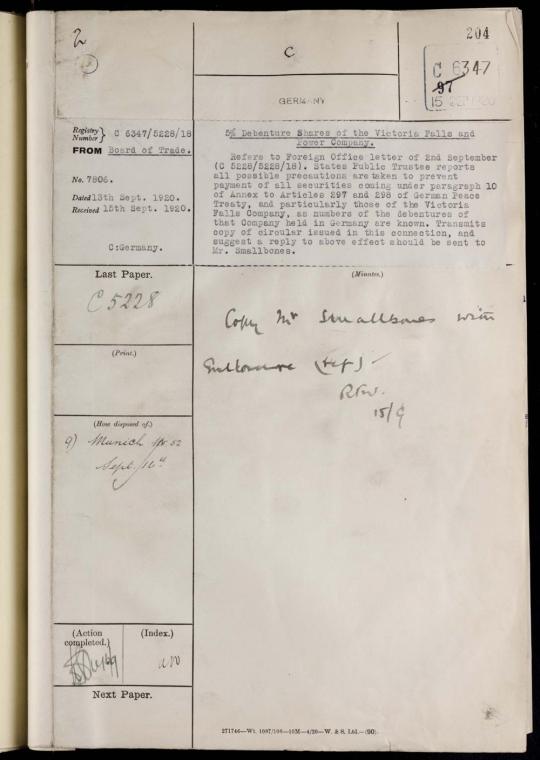
Unfortunately, in 1910, the Power Act was instituted by the colonial governors of the time, which concluded that, after 35 lank-expensive years of infrastructure laying and the trial and error of new business ventures in the fields of the sciences, most especially, physics, that the company was to be expropriated - by government - along with any other electricity generating and supplying companies (that might have mistakenly thought they had it good); as the government wanted absolute control over (everything AND) what it deemed a utility and essential service.
After the electrification of the South African national railways, ou Trrransnet; UK based consulting engineerial firm Meets & McLellan was requested to inspect the electricity sector and it's incarnations and submit the findings of said inspection to the government. Lord Charles Hesterman Mertz was considered a universal electricity and railway electrification expert and submitted the report in 1920. As a result the Electricity Act was passed in September 1922.
The point of all this is:
a) Zimbaabweee's diamonds were most likely mined and sold and that is what afforded our level of electricity 'infrasructure' here in South Africa as it was the Victoria Falls Power Company that had laid infrastructure for 35 yrs before having to hand it all over to the guvvies of SA. I don't know what dodgy deal had transpired then but clearly Zim owns a piece of S.A. electricity. Or is owed a sweet-toned apology letter and hug. Whilst they starve.
b) David Livingstone's memoirs record the Victoria Falls as being named 'The Smoke That Thunders' or 'The Thundering Smoke'. I think we should respect that and demand that the Zimpeople name their own waterfall with most lovely name ever.

c) Lord so-and-so and Governor so-and-so and railway electrification whatever; all this whilst, at roundabout the same time, His Royal Majesty Zulu King Cetwayo lay in a prison-like cell, at what is now called Oude Molen Eco Village in Maitland Garden Village, where he lived out his years and died; having never set eyes on ZuluLand again.
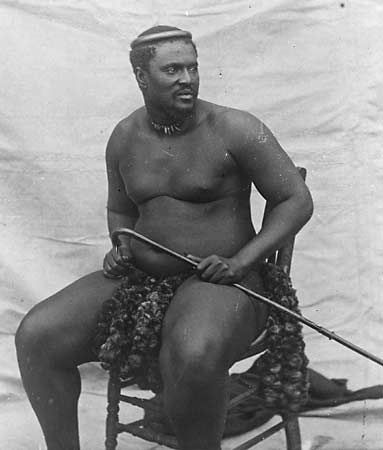
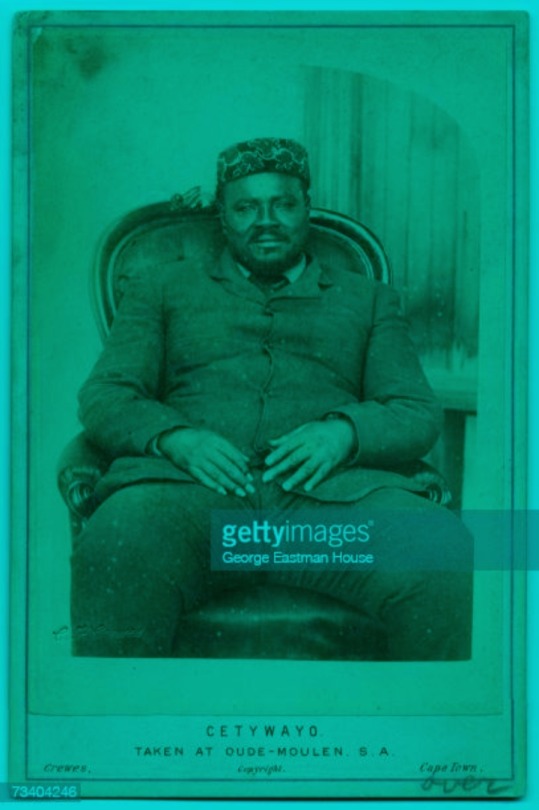

To definitely be continued ...
Lots of juicy 'WHHAAAAT?' moments and the Unbended Truth.
Sources
https://www.eskom.co.za/heritage/the-early-years/#:~:text=Kimberly%20Electric%20Streetlights%20%E2%80%93%20February%20to,evening%20of%2015%20February%201882.
#eskom#loadshedding#cohesiveeskomsolutionz#power#GreenCleanPower#TheEdisonLightbulb#ThomasEdison#Preface#HRMKingSetswayo#ZuluLand
1 note
·
View note
Photo

History of Cogeneration
The cogenation term is not new.It is first appered in the data 1980 in rope and the early 20th century in the red lates when mot industrial plants generated their own sectary using coal-fired boders and Steam Turbo Gonorators Perhaps the first modern use of energy recycling was done by thomas faison His 1882 Pear Street Station, the world's first commercial power plant was a combined heat and power plant producing both Thormal and electrical energy while using waste heat to warm neighboring buildings. Many of these plants used exhaust steam for industrial. According to COGEN Europe, an advocacy group based in Belgium, cogeneration produced as much as 58% of the total power from on-site industrial power plants in the United States in the early 1990s.
Cogeneration or Combined Heat and Power (CHP) is the use of a heat engine or power station to generate electricity and useful heat at the same time. Heat losses are reduced and efficiency is increased when cogeneration is used to supply heat to various applications and facilities. Typical cogeneration systems have overall efficiencies ranging from 65% to 90% Cogeneration is more efficient due to the levels of fuel that are used.
Turtle Turbines (P) Ltd.
Continuum, Off, Pashan - Sus Rd, Baner, Pune, Maharashtra 411045
+91 7030 9155 30/31/32/33
https://lnkd.in/d4b9Vji
top Steam Turbine Manufacturer in India
0 notes
Photo

Dusé Mohamed Ali (Bey Effendi) (November 21, 1866 – June 25, 1945) was a Sudanese-Egyptian actor and political activist, who became known for his African nationalism. He was a playwright, historian, journalist, editor, and publisher. In 1912 he founded the African Times and Orient Review, revived as the African and Orient Review, which was published in total through 1920. He lived and worked mostly in England, with time in the US and Nigeria. In the latter location, he founded Comet Press Ltd and The Comet newspaper in Lagos. He received his early training in Egypt, but at the age of 9 or 10, his father arranged for him to go to England to be educated, His father died in 1882 while serving at the Battle of Tel el-Kebir in Egypt. He was forced to return to Egypt. After settling affairs with his father's estate, he returned to England. As the ward of Canon Berry, he pursued studies at King's College London. He had intended to study as a doctor and had started on related studies before his father's death. Afterward, he wanted to write and act. On completing his studies at the University of London, he was in the company of Herbert Beerbohm Tree and Lillie Langtry's production of Antony and Cleopatra at the Royal Princess Theatre, London. As an actor, he toured the British Isles. He produced Othello and The Merchant of Venice in Hull, Yorkshire, playing the parts of Othello and the Prince of Morocco. He earned praise from the British press. He wrote several plays, producing The Jew's Revenge at the Royal Surrey Theatre in London, A Cleopatra Night at Dundee, and the Lily of Bermuda, a musical comedy at the Theatre Royal, Manchester. The productions were praised by the British and American press. His production and performance in A Daughter of Judah which he first produced in the Glasgow Empire Theatre received particularly good reviews. #africanhistory365 #africanexcellence https://www.instagram.com/p/ClOKCm6LkEN/?igshid=NGJjMDIxMWI=
0 notes
Text

Hanhart Primus Pilot Austrian Airforce ltd 100 pieces

#hanhart#hanhartfan#rolex#hanhart-fan aus luxemburg#hanhartfan from luxembourg#hanhart1882fan#hanhart-fan#hanhartfan aus luxemburg#1882#primus#austrianairforce#austrian#airforce pilot#pilot#air force#force#let the force be with you#ltd#limited edition#strictly limited#limitierte auflage#lebkucken#gugelhupf#googlehupf
2 notes
·
View notes
Photo

For Now by majomilk featuring a tea cup
#polyvore#fashion#style#Vince#Cheap Monday#ASOS#Balenciaga#Rebecca de Ravenel#Mykita#Miss Selfridge#Monsoon#L'Oréal Paris#SUQQU#Chantecaille#Herbivore#Sloane Stationery#1882 Ltd.#Beams+#Aspinal of London#clothing
19 notes
·
View notes
Photo

James Joyce, February 2, 1882 / 2022
(image: Berenice Abbott (photograph), James Joyce, 1928. National Portrait Gallery, London. © Berenice Abbott / Commerce Graphics Ltd, Inc.)
#photography#james joyce#birthday anniversary#berenice abbott#national portrait gallery#1880s#1920s#2020s
91 notes
·
View notes
Photo

FAYE TOOGOOD’S DISHES FOR 1882 LTD EVOKES A BLUE-AND-WHITE HISTORY, AND THE GLOBAL BLUES WE OUGHT TO FEEL NOW
THE DAILY PIC is one of the “Indigo Storm” dishes by designer Faye Toogood, commissioned by a pottery named 1882 Ltd. It’s based in the great ceramics center of Stoke-on-Trent, England, and run by the fourth and fifth generations of the Johnson Brothers family.
I admit to being an ongoing sucker for anything that riffs on traditional ceramics — in this case, on the blue-and-white ware that got its start in 9th-century Iraq, began to be produced in China for export to the Middle East, eventually became a local Chinese product, then became a prized export product once again in the 17th and 18th centuries, especially for the English market. And then of course it got copied by England’s own booming ceramic industry ... in places like Stoke-on-Trent.
Toogood sees her patterns as essentially abstract — they come about from the random swirling of the blue pigment in the slip. But I’m attracted to how much they evoke the satellite imagery of our current global age, when the earth’s atmosphere out to be on all of our minds (and dishes?).
For a full survey of past Pics visit blakegopnik.com/archive.
5 notes
·
View notes
Photo

The one and only Wiliam Shakspere, best read while enjoying a glass of wine
( first published by Cassell and Company, Ltd, London, Paris, New York & Melbourne, first printed February 1877, reprinted October 1877, 1878, January and June 1882, 1866. Cheap edition August 1887. Reprinted 1888, 1890, 1893, 1895, 1896, 1899. this edition 1904)
(Source: rola balthus)

The Leopold Shakspere: The Poet's Works, in Chronological Order, From the Text of Professor Delius, With "the Two Noble Kinsmen" And "Edward III." (Classic Reprint)by William Shakespeare (Author)
6 notes
·
View notes
Photo

Frank Harris was born on February 14, 1855. He was an Irish-American editor, novelist, short story writer, journalist and publisher, who was friendly with many well-known figures of his day.
Born in Ireland, he emigrated to the United States early in life, working in a variety of unskilled jobs before attending the University of Kansas to read (study) law. After graduation, he quickly tired of his legal career and returned to Europe in 1882. He traveled in continental Europe before settling in London to pursue a career in journalism. In 1921, in his sixties, he became a US citizen. Though he attracted much attention during his life for his irascible, aggressive personality, editorship of famous periodicals, and friendship with the talented and famous, he is remembered mainly for his multiple-volume memoir My Life and Loves, which was banned in countries around the world for its sexual explicitness.
Harris was not cut out to be a lawyer and soon decided to turn his attention to literature. He returned to England in 1882, later traveling to various cities in Germany, Austria, France, and Greece on his literary quest. He worked briefly as an American newspaper correspondent before settling down in England to seriously pursue the vocation of journalism.
Harris became an American citizen in April 1921. In 1922 he travelled to Berlin to publish his best-known work, his autobiography My Life and Loves (published in four volumes, 1922–1927). It is notorious for its graphic descriptions of Harris' purported sexual encounters and for its exaggeration of the scope of his adventures and his role in history. Years later, Time magazine reflected in its 21 March 1960 issue "Had he not been a thundering liar, Frank Harris would have been a great autobiographer ... he had the crippling disqualification that he told the truth, as Max Beerbohm remarked, only 'when his invention flagged'." A fifth volume, supposedly taken from his notes but of doubtful provenance, was published in 1954, long after his death.
Harris also wrote short stories and novels, two books on Shakespeare, a series of biographical sketches in five volumes under the title Contemporary Portraits and biographies of his friends Oscar Wilde and George Bernard Shaw. His attempts at playwriting were less successful: only Mr. and Mrs. Daventry (1900) (which was based on an idea by Oscar Wilde) was produced on the stage.
Works
Montes the Matador & Other Stories (London, Grant Richards, 1900)
The Bomb (1908)
The Man Shakespeare and his Tragic Life Story (London, Frank Palmer, 1909)
The Yellow Ticket And Other Stories (Grant Richards Ltd., 1914)
Contemporary Portraits... in four vols (1915–1923)
Oscar Wilde, His Life and Confessions (1916)
My Life and Loves, (1922–1927, 1931, 1954, 1963 (complete))
Undream'd of Shores (London, Grant Richards, 1924)
My Reminiscences as a Cowboy (1930)
Confessional (1930). Essays.
Pantopia: A Novel (1930)
Bernard Shaw (1931)
The Short Stories of Frank Harris, a Selection (1975). Elmer Gertz, ed.
Married three times, Harris died in Nice aged 75 on 26 August 1931, of a heart attack. He was subsequently buried at Cimetière Sainte-Marguerite, adjacent to the Cimetière Caucade, in the same city.
Just after his death a biography written by Hugh Kingsmill (pseudonym of Hugh Kingsmill Lunn) was published.
Daily inspiration. Discover more photos at http://justforbooks.tumblr.com
9 notes
·
View notes